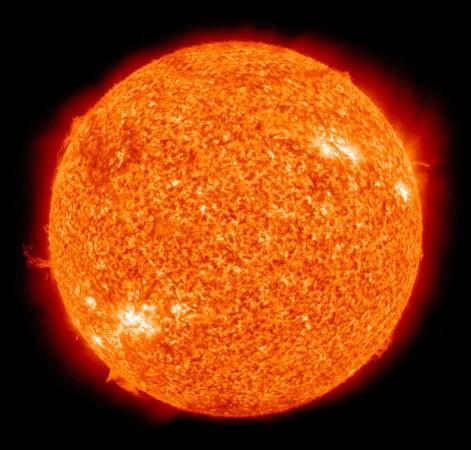
The sun's magnetic field is reportedly going to flip by 180 degrees in the next three to four months, which will cause disruption in solar space and earth's atmosphere.
In a news release by National Aeronautics and Space Administration (NASA) Todd Hoeksema, Director of Solar Observatory at Stanford University said, "It looks like we are no more than three to four months away from a complete field reversal. This change will have ripple effects throughout the solar system."
Scientists world over have warned that the heat waves generated by this flip will affect the radio communications, cause damage to satellites, lead to changes in climate and create storms.
"The nations situated in the geo-magnetic pole of the earth will be the most affected. Those closer to the equator will be the least affected," said Arnab Rai Choudhuri, Professor at Department of Physics, Indian Institute of Science.
Sun goes through a cycle of 11 years where the activity on the surface (coronal mass ejections) increase and decrease in a wave pattern. These ejections are observed through flares and spots appearing on the sun at intervals. The phase where the coronal mass ejections are frequent is called solar maxima and the phase when these ejections are lesser is called solar minima.
The reversal of the sun's magnetic poles is considered as a big event because scientists predict that change in the magnetic influence extends beyond Pluto. The flipping is said to produce a sheet of current that is a sprawling surface extending from the sun's equator where the rotating magnetic field induces an electrical current into the solar system.
Data from Wilcox Solar Observatory showed that the sun's south and north hemispheres are out of synch. "The sun's North Pole has already changed sign, while the South Pole is racing to catch up. Soon, however, both poles will be reversed, and the second half of solar maxima will be underway," said Phil Scherrer, Solar physicist at the Wilcox Solar Observatory.
"World over scientists are studying the sun's magnetic field. Hence if we can predict a flare two or three days in advance, appropriate precautions can be taken," added Choudhuri.
He also explained that this solar cycle is the weakest in 100 years. Choudhari and his colleagues P. Chatterjee and J. Jiang published a paper in Physical Review Letters in 2007 titled "Predicting solar cycle 24 with a solar dynamo model" where the authors created a theoretical model predicting that the sun's 24th cycle will be the weakest in 100 years. "So we can predict that the damage will be minimum," he said.










